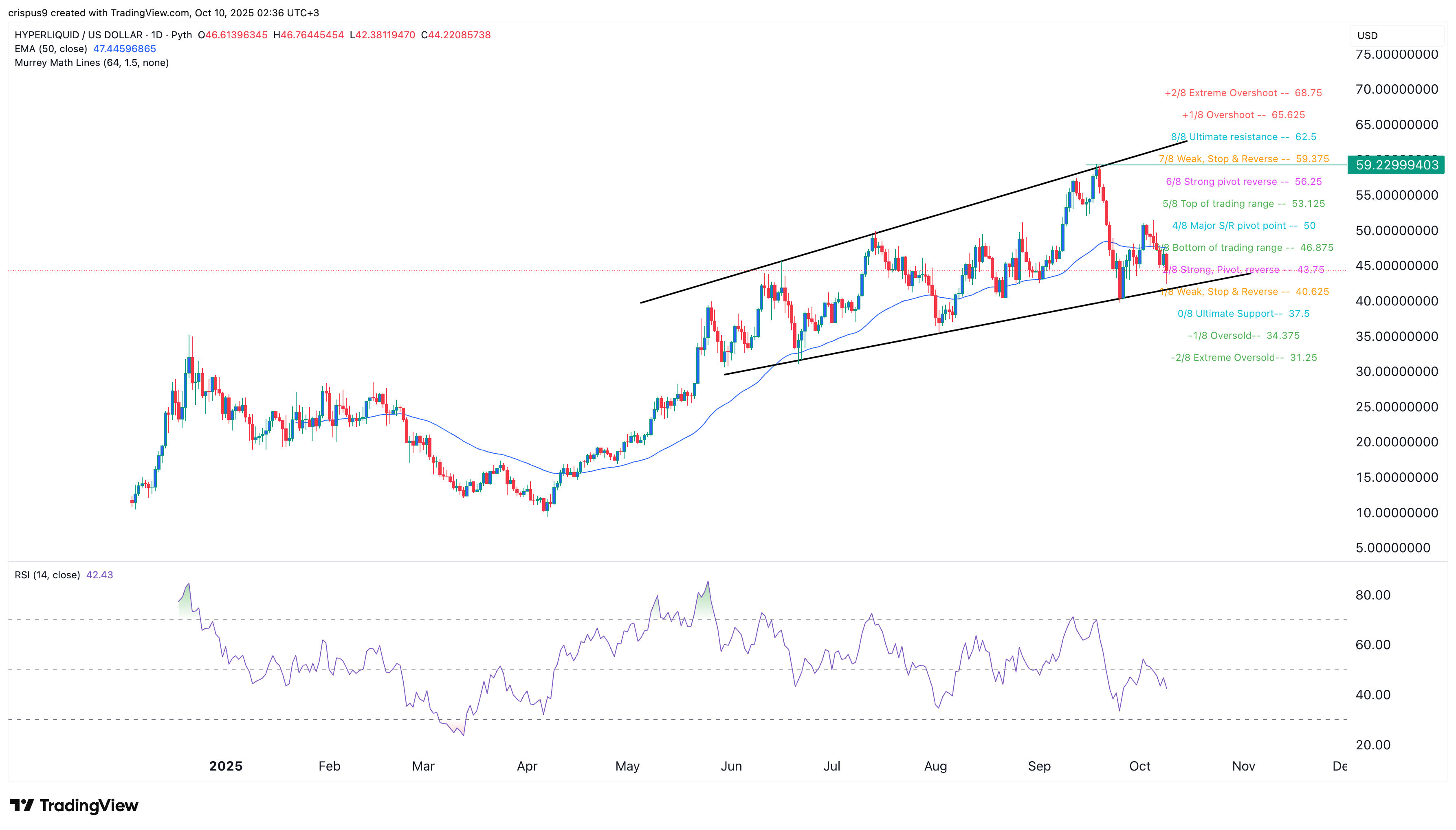HYPE price pulled back and hit a crucial support level, pointing to an eventual comeback despite the rising competition in the perpetual future industry. Hyperliquid token was trading at $44.20, much lower than the year-to-date high of $60.
HYPE Price Analysis as Megaphone Forms
The daily timeframe chart shows that the HYPE price has pulled back in the past few weeks. This crash happened as competition in the industry escalated.
Hyperliquid token has crashed below the 50-day Exponential Moving Average (EMA) and is now at the strong pivot, reverse level of the Murrey Math Lines tool.
The Relative Strength Index (RSI) and the MACD indicators have all pointed downwards. On the positive side, the coin has formed a giant megaphone pattern, comprising two ascending and broadening trendlines.
This pattern is one of the most common bullish reversal signs in technical analysis. In this case, a bullish breakout will see it retest the strong pivot reverse point at $56.25.
READ MORE: Ethereum Price Elliot Wave Analysis as ETH ETFs Hit $15B Milestone
On the other hand, a drop below the lower side of the megaphone will invalidate the bullish view and point to more downside. If this happens, the next level to watch will be at $35.

Hyperliquid Losing Market Share
One fundamental reason why the HYPE price has struggled lately is that it is slowly losing market share in the perpetual futures industry. For example, data shows that the volume in its perpetual futures platform was $8.64 billion in the last 24 hours.
Lighter, EdgeX, and ApeX Protocol handled over $8.4 billion, $4 billion, and $3.76 billion. Its 30-day volume was $287 billion, while Lighter and edgeX had over $195 billion and $112 billion, respectively. Aster is also taking its market share, while Synthetix plans to launch a similar service.
There are signs that the growing competition is affecting Hyperliquid’s performance. For example, the monthly volume on its platform dipped to $282 billion in September, down from $398 billion in the previous month.
The volume will likely drop also this month, which will affect its fees and revenue. Hyperliquid’s fees dropped to $86 million in September from $116 million a month earlier. Also, Hyperliquid’s revenue dropped, meaning that the burn rate retreated.
The same trend is happening with Hyperliquid’s layer-1 network, where the total value locked (TVL) has stalled at $7.1 billion, and the stablecoin supply has remained at $6 billion.
READ MORE: Chainlink Price Prediction: Why LINK is About to Soar













